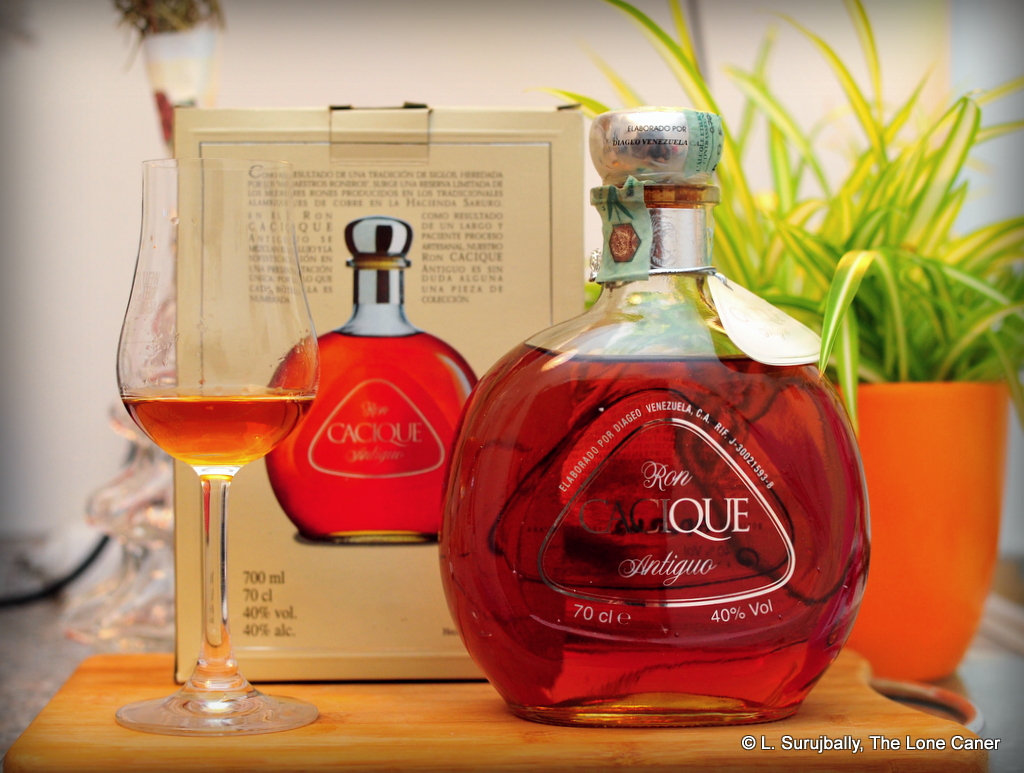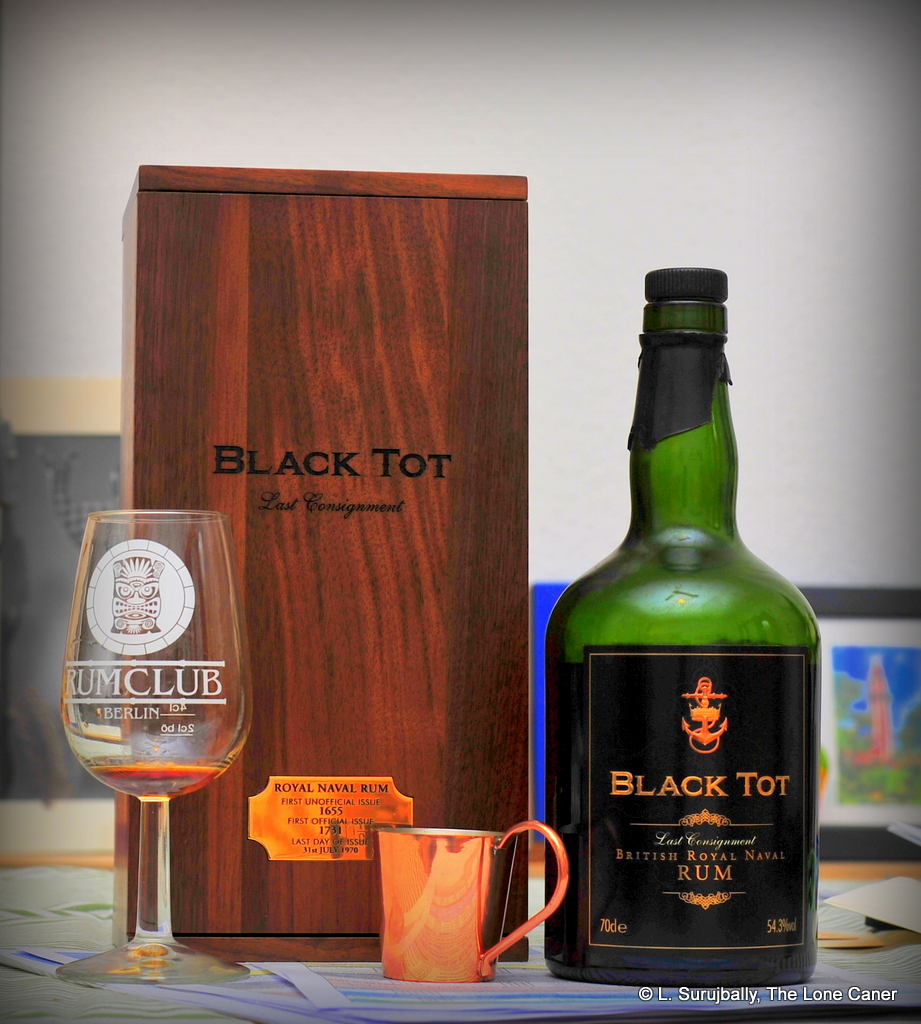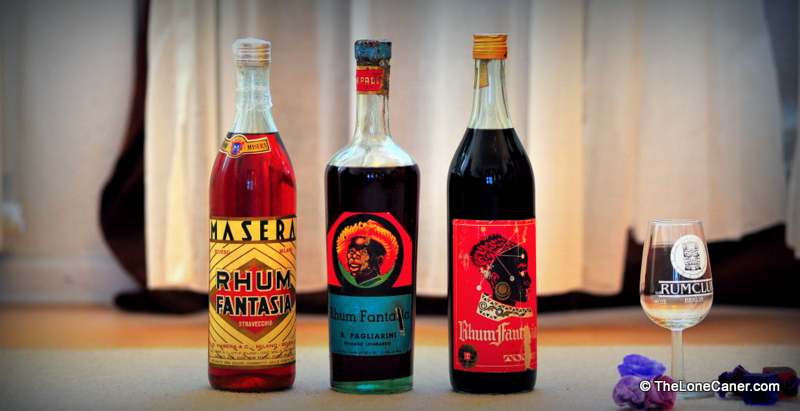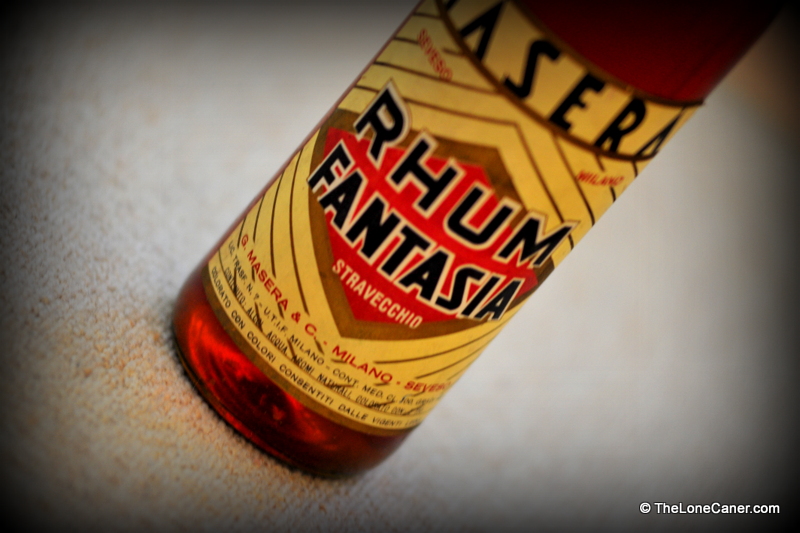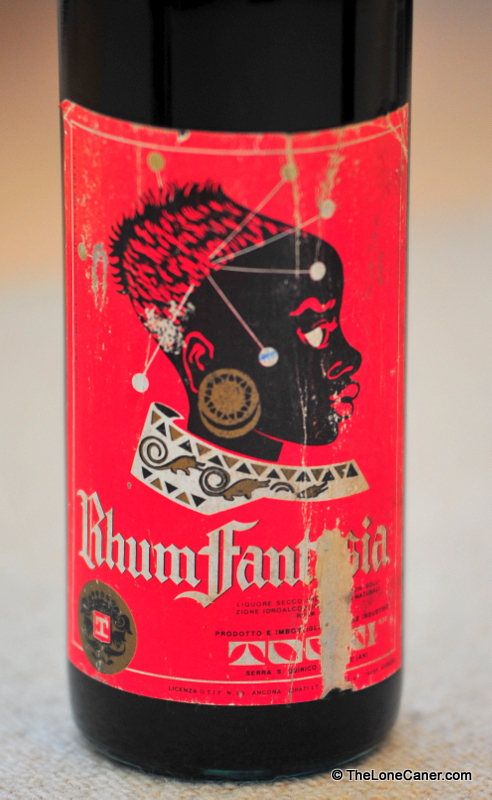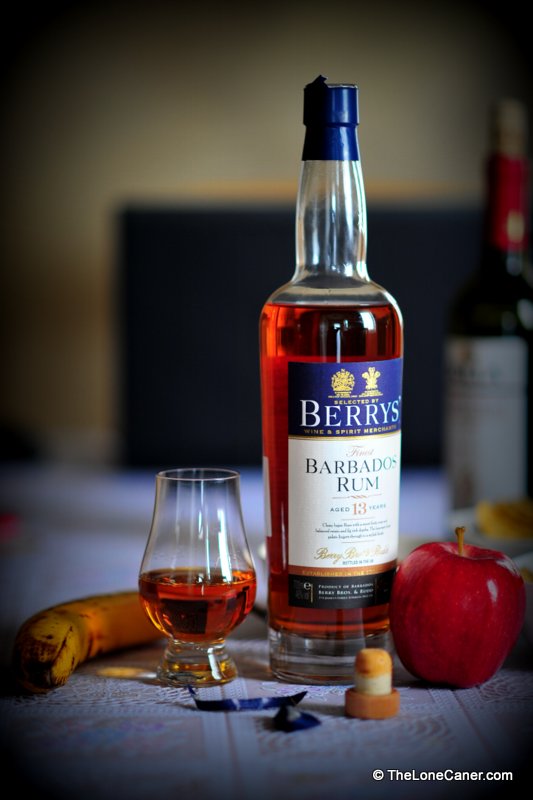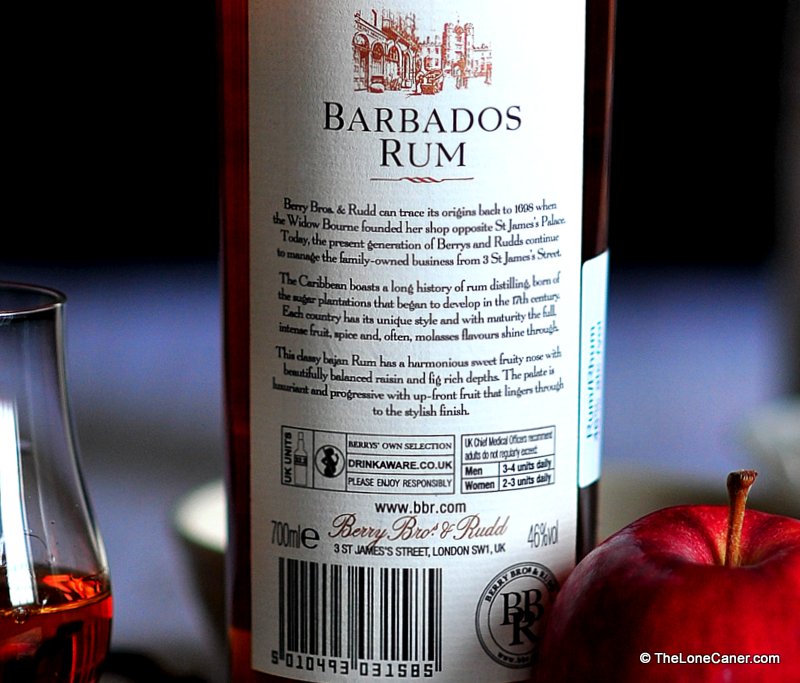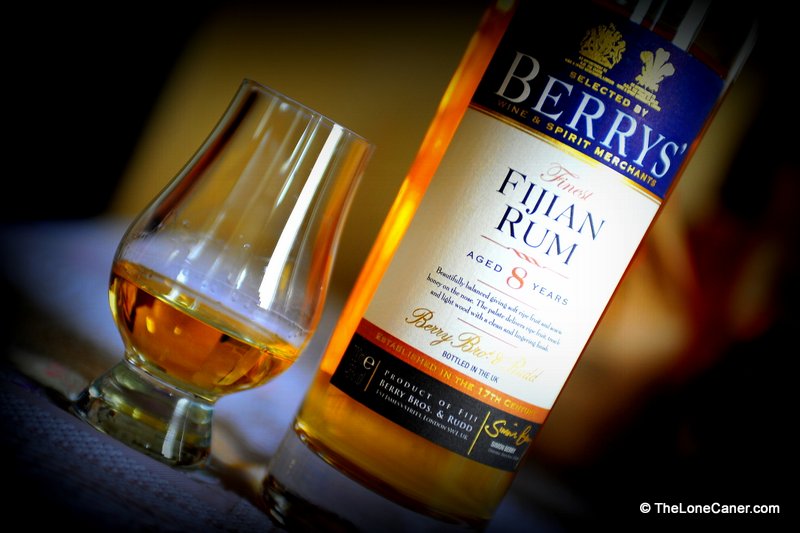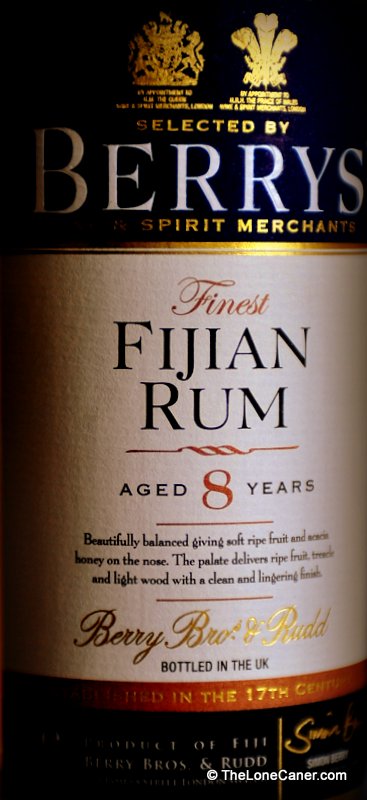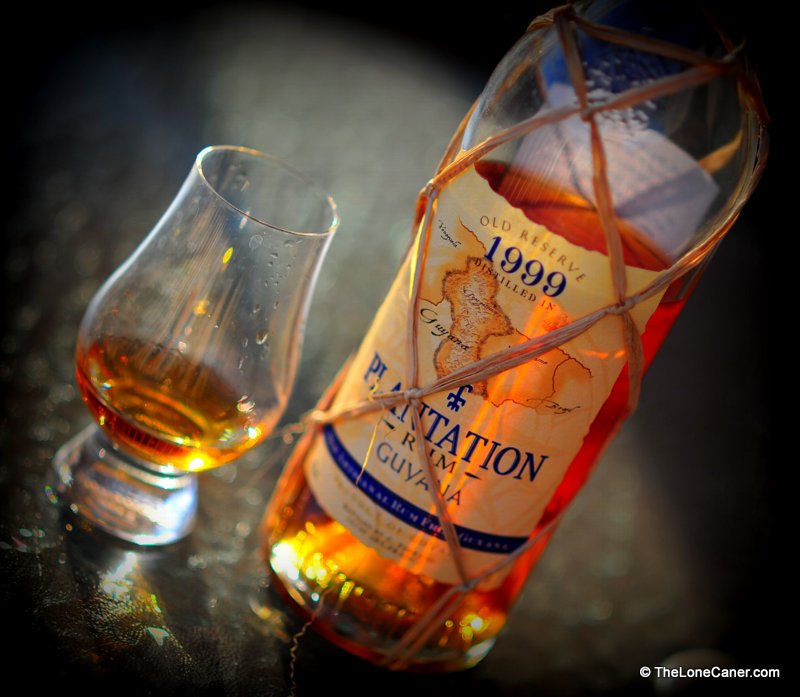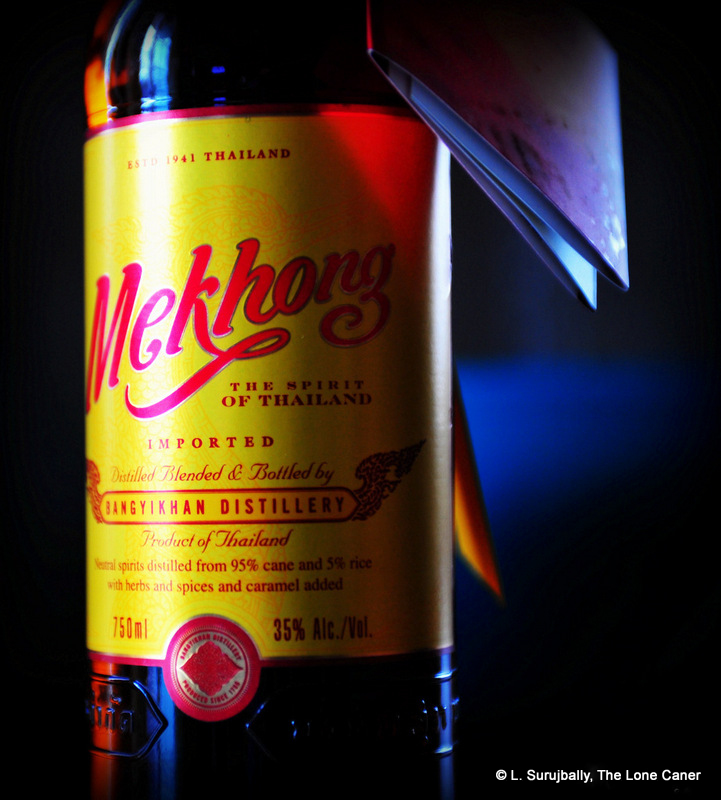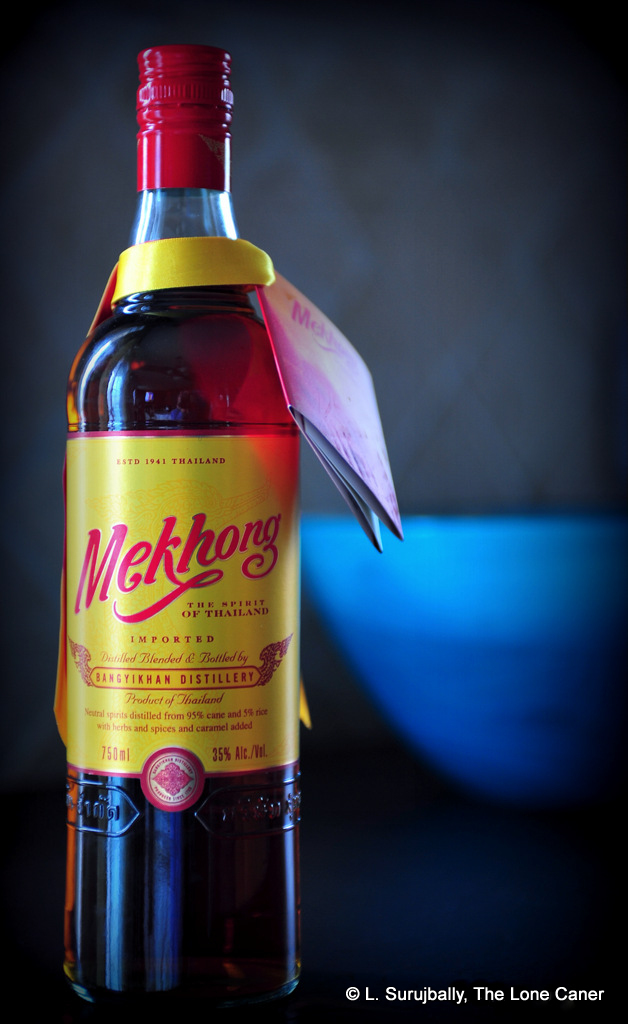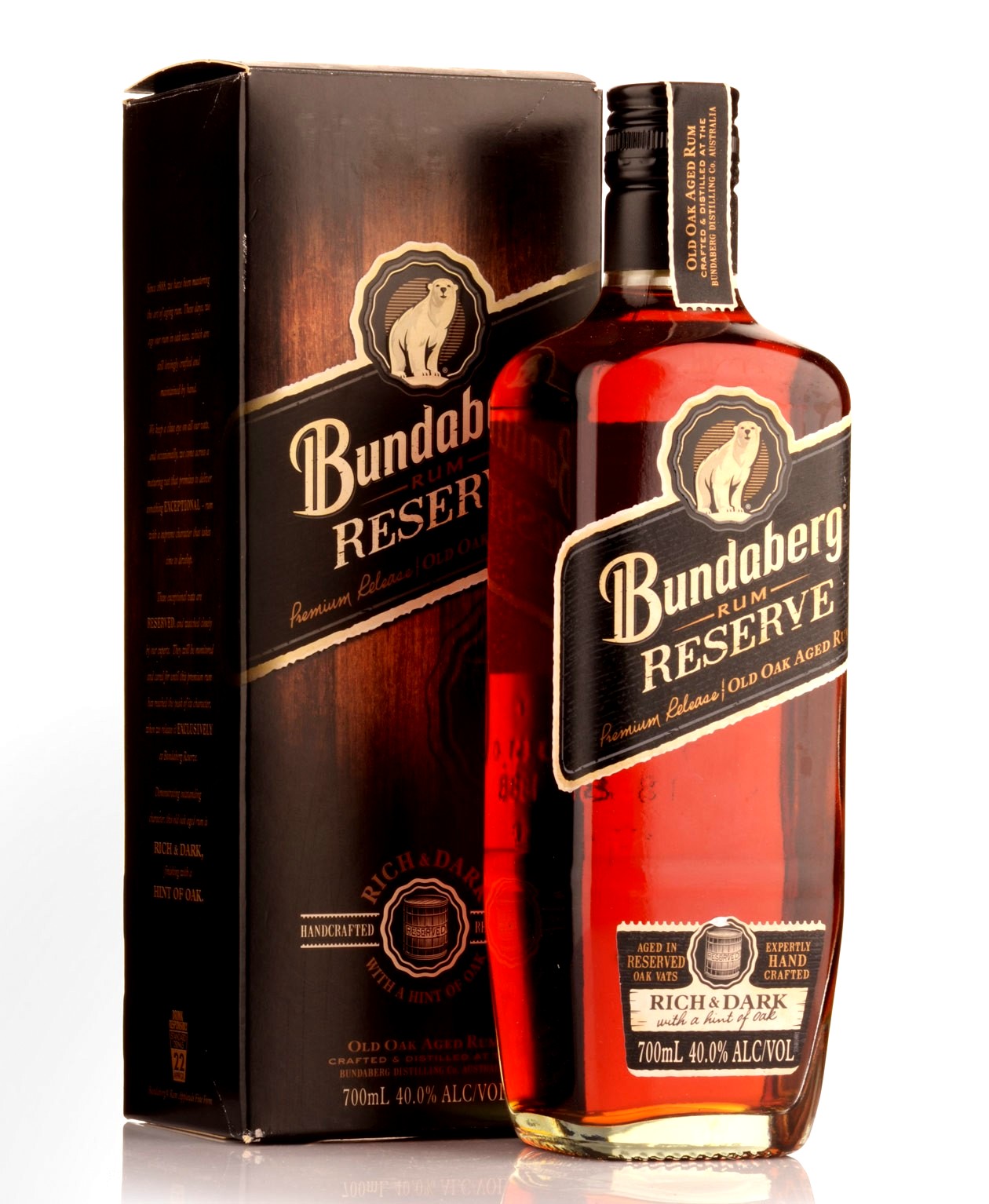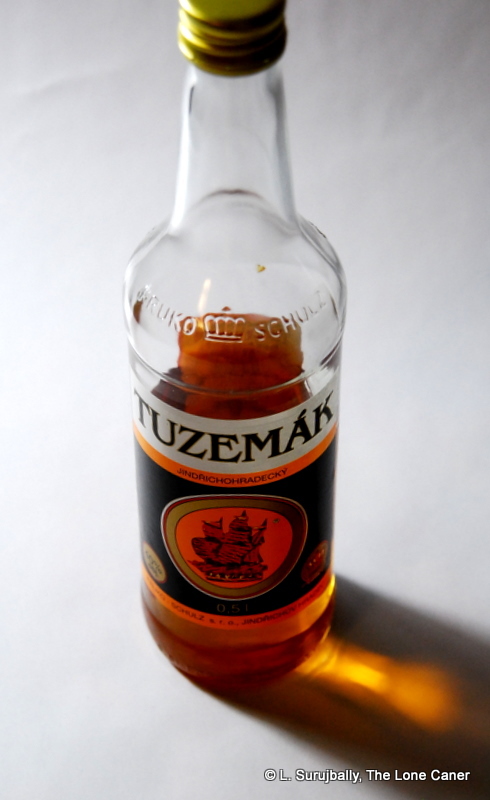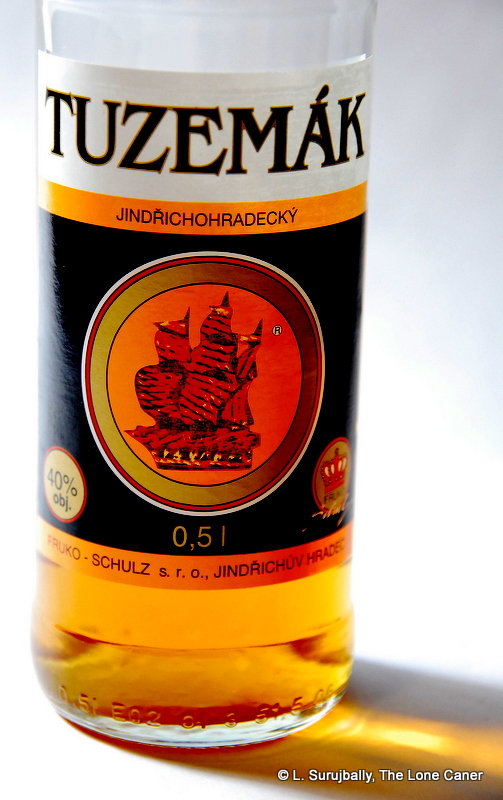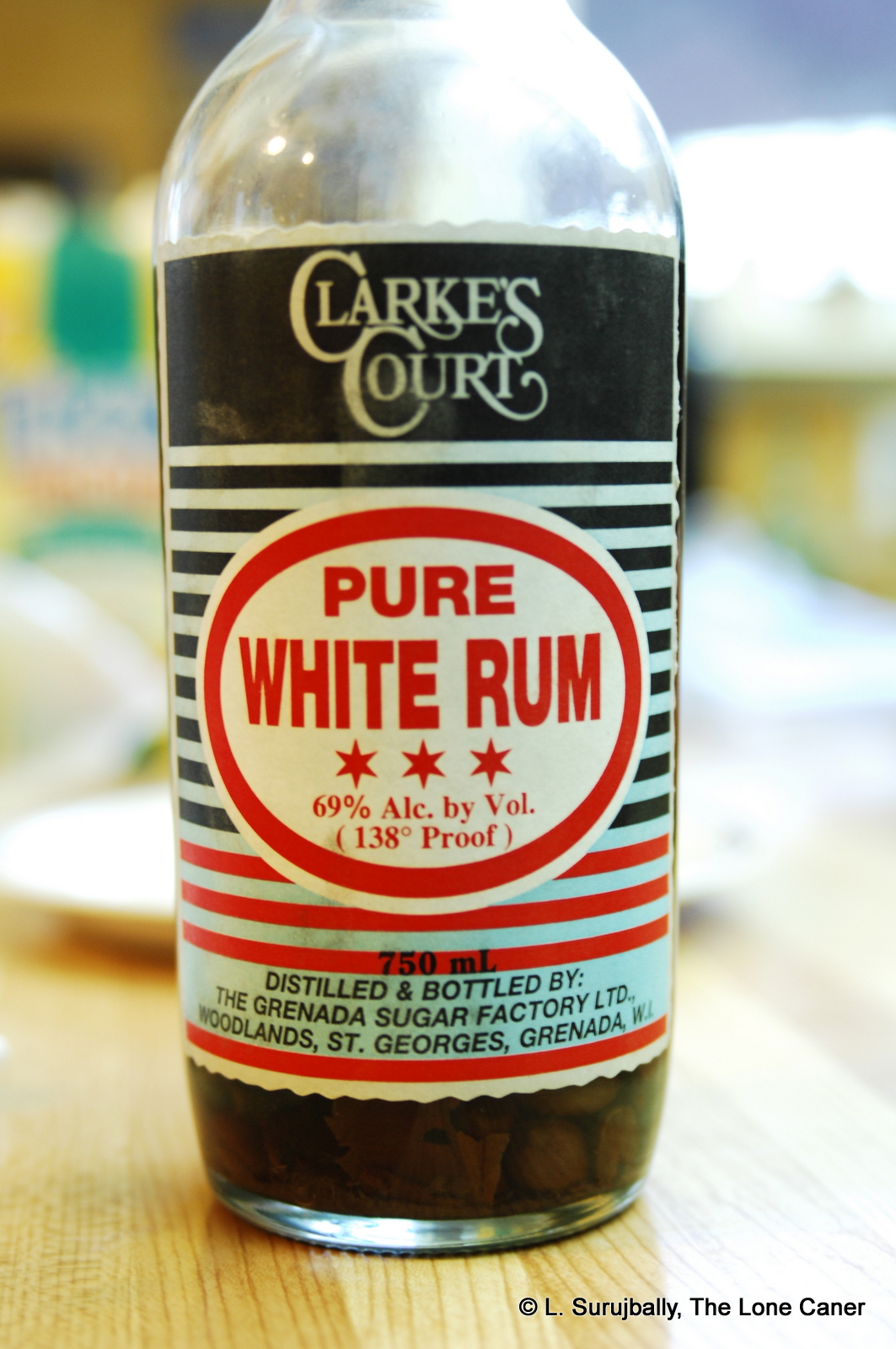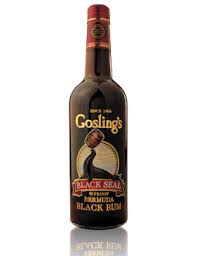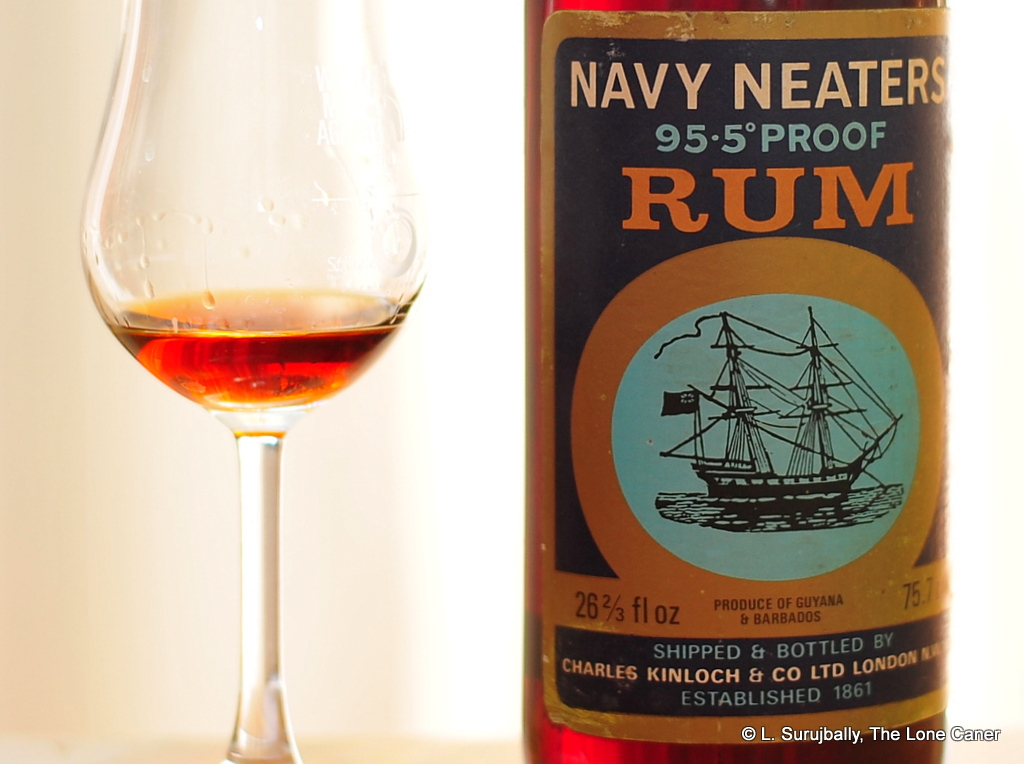
A blue-water rum for the Navy men of yore.
This may be one of the best out-of-production independent bottlings from Ago that I’ve had. It’s heavy but no too much, tasty without excess, and flavourful without too many offbeat notes. That’s quite an achievement for a rum made in the 1970s, even more so when you understand that it’s actually a blend of Guyanese and Bajan rums, a marriage not always made in heaven.
I’ve trawled around the various blogs and fora and articles looking for references to it, but about all I can find is that (a) Jolly Jack Tars swear by it the way they do Woods or Watson’s and (b) it’s supposedly slang for undiluted Pusser’s navy rum. “Neaters” were the undiluted rum served to the petty officers onboard ship; ratings (or regular sailors if you will), were served with a measure of rum famously known as the tot, which was a quantity of diluted rum called grog, and if you don’t know the terms, well, brush up on your reading of rums.
The rum is bottled at 95.5º proof, and one has to be careful what that means – it’s not actually half that (47.75%) according to modern measures, but 54.5%. And that’s because originally 100 proof rum was actually 57% and so….well, you can do the math, and read a previous essay on the matter to get the gist of it. Beyond that, unfortunately, there’s very little information available on the rum itself — proportion of each country’s component, and which estate’s rums, for example — so we’re left with rather more questions than answers. But never mind. Because all that aside, the rum is great.
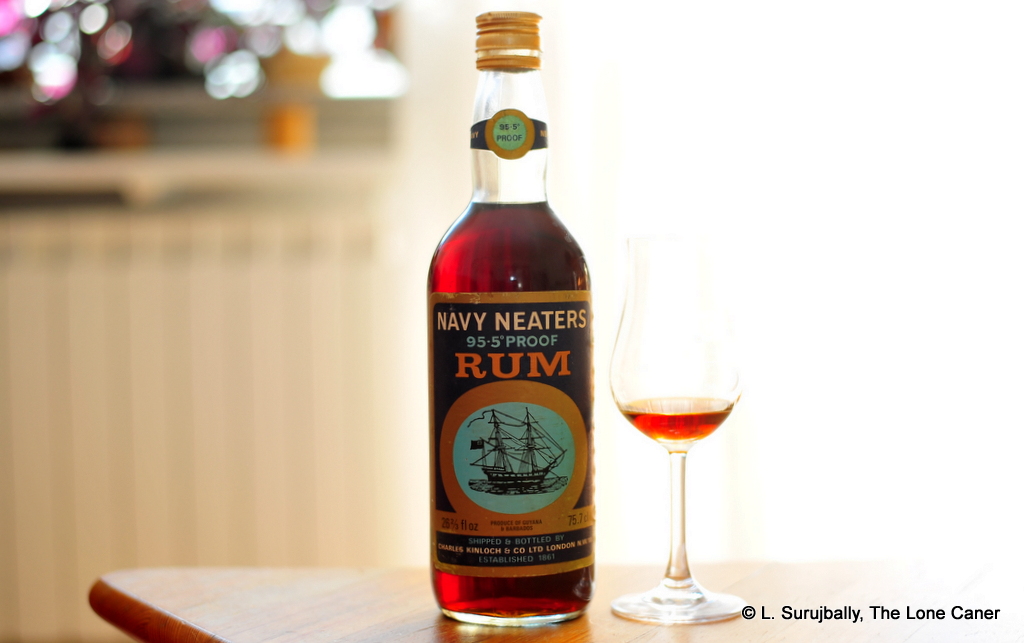
I have to admit, I enjoyed smelling the mahogany coloured rum. It’s warmth and richness were all the more surprising because I had expected little from a late ’60s / early ’70s product ensconced in a faded bottle with a cheap tinfoil cap, made by a defunct company. It started off with prunes, pepsi-cola (seriously!), molasses, brown sugar and black tea, and developed into cherries and purple-black grapes – complexity was not its forte, solidity was. The primary flavours, which stayed there throughout the tasting, were exclamation points of a singular, individualistic quality, with no attempt at subtlety or untoward development into uncharted realms. In the very simplicity and focus of its construction lay its strength. In short, it smelled damned good.
The heavy proofage showed its power when tasted neat. Neaters was a little thin (I guess the nose lied somewhat in its promise) but powerful, just this side of hot. No PM or Enmore still rum here, I thought, more likely Versailles, and I couldn’t begin to hazard where the Bajan component originated (WIRD is as good a guess as any). Still, what an impressive panoply of tastes – flowers, cherries again, some brown sugar and molasses, coffee grounds, watermelon. The softness of the Bajan component ameliorated the fiercer Guyanese portions of the blend, in a way that I hadn’t seen before, and boy, did that ever work. It was smooth and rattling at the same time, like a mink-overlaid machine gun. With some water added, a background of fried banana bread emerged, plus more brown sugar and caramel, salt butter, maple syrup and prunes, all tied up in a neat bow by a finish that was just long enough and stayed with the notes described above without trying to break any new ground. So all in all, I thought it was a cool blast from the past.
 A well made full proof rum should be intense but not savage. The point of the elevated strength is not to hurt you, damage your insides, or give you an opportunity to prove how you rock it in the ‘Hood — but to provide crisper, clearer and stronger tastes that are more distinct (and delicious). When done right, such rums are excellent as both sippers or cocktail ingredients and therein lies much of their attraction for people across the drinking spectrum. Perhaps in the years to come, there’s the potential for rum makers to reach into the past and recreate such a remarkable profile once again. I can hope, I guess.
A well made full proof rum should be intense but not savage. The point of the elevated strength is not to hurt you, damage your insides, or give you an opportunity to prove how you rock it in the ‘Hood — but to provide crisper, clearer and stronger tastes that are more distinct (and delicious). When done right, such rums are excellent as both sippers or cocktail ingredients and therein lies much of their attraction for people across the drinking spectrum. Perhaps in the years to come, there’s the potential for rum makers to reach into the past and recreate such a remarkable profile once again. I can hope, I guess.
Company bio
Charles Kinloch & Son were wine and spirits merchants who were in existence for almost a hundred years when they joined the Courage Brewery group in 1957. That company had been around since 1757 and after many mergers and acquisitions was itself taken over by the Imperial Tobacco Group in 1972, eventually passing to the Foster’s Group in 1990. In 1995 Scottish & Newcastle bought Courage from Foster’s and it changed hands again in 2007 when Wells & Young’s Brewing company bought all the brands under that umbrella. By then Navy Neaters had long been out of production, Kinloch was all but forgotten, and the current holding company now is more involved in pubs and beers in the UK than in rums of any kind.
(#275 / 86/100)
Other notes
- The rum had to have been made post-1966, given the spelling of “Guyana” on the label. Prior to that it would have been British Guiana. The metric system of ml and cl was introduced in 1980 in the UK, so this can reasonably be dated to the 1970s.
- The age is unknown. I think it’s more than five years old, maybe as much as ten.
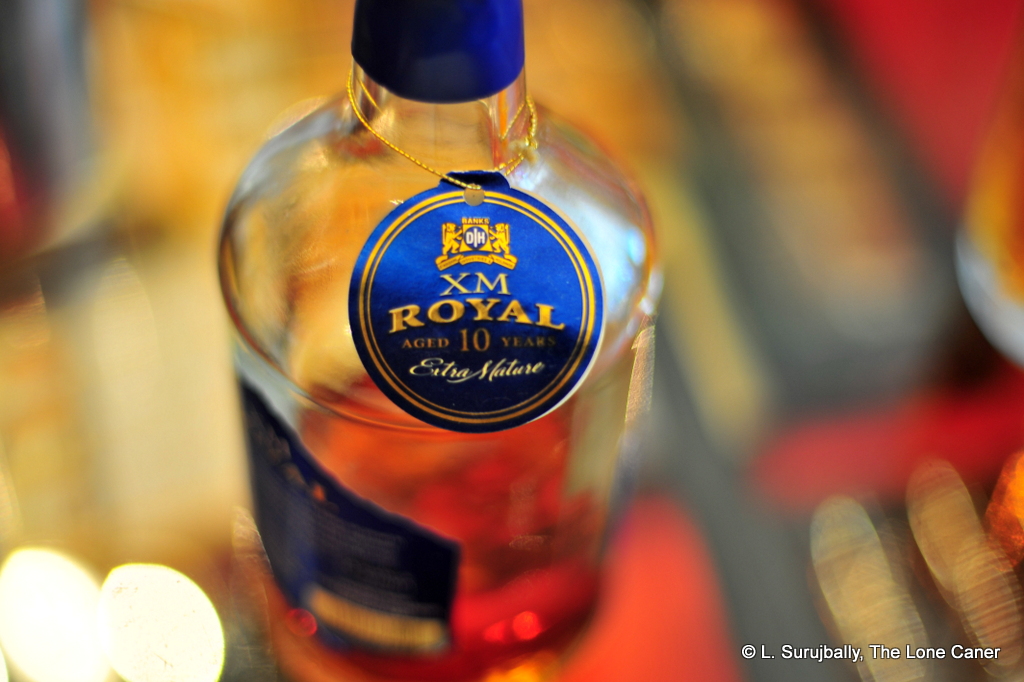
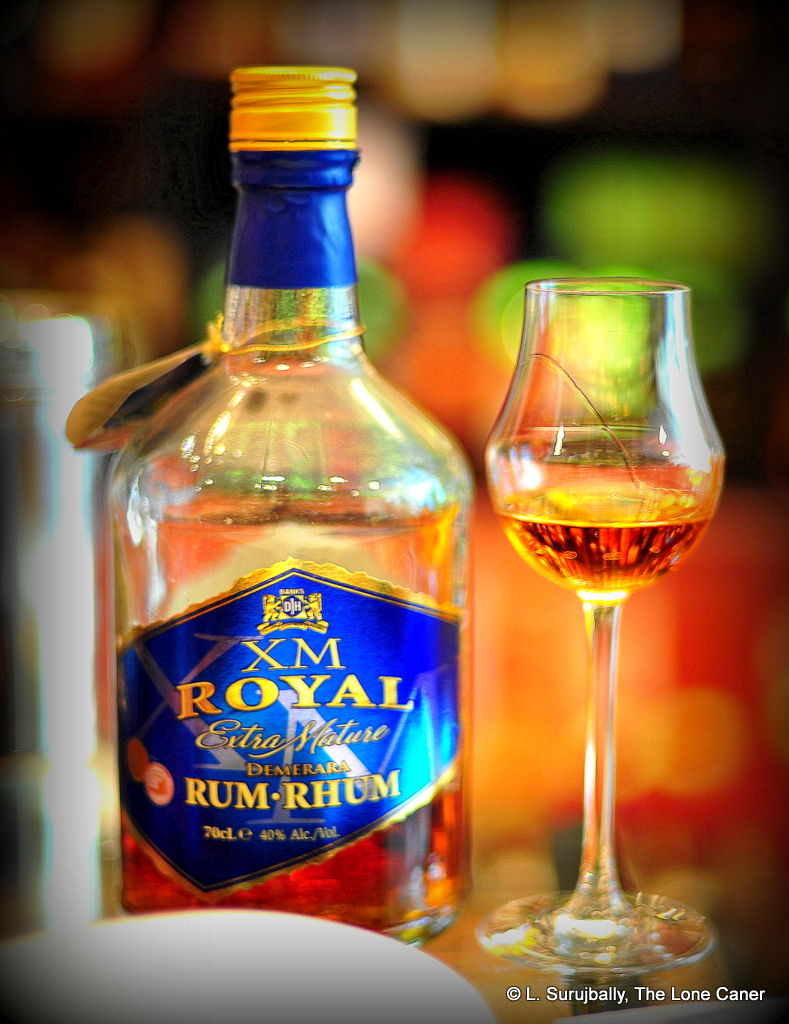 Starting as “Demerara Ice House” (there really was an ice factory in Water Street, and yes, it’s still there) and now called D’Aguiar’s Industries and Holdings (hence the DIH) at the beginning of the 20th century, the D’Aguiar family built up a huge food and drinks conglomerate, of which rums remain a relatively small part – they were and remain one of the first and largest bottlers in the Caribbean. They have a huge facility right outside Georgetown in the fragrantly named “Thirst Park”, they make beer, soft drinks, distilled water (among many other consumer nibbles) and with respect to rums, act as blenders, not makers like DDL. Their best known rums back then were the 5, 10 and 15 year old, the
Starting as “Demerara Ice House” (there really was an ice factory in Water Street, and yes, it’s still there) and now called D’Aguiar’s Industries and Holdings (hence the DIH) at the beginning of the 20th century, the D’Aguiar family built up a huge food and drinks conglomerate, of which rums remain a relatively small part – they were and remain one of the first and largest bottlers in the Caribbean. They have a huge facility right outside Georgetown in the fragrantly named “Thirst Park”, they make beer, soft drinks, distilled water (among many other consumer nibbles) and with respect to rums, act as blenders, not makers like DDL. Their best known rums back then were the 5, 10 and 15 year old, the 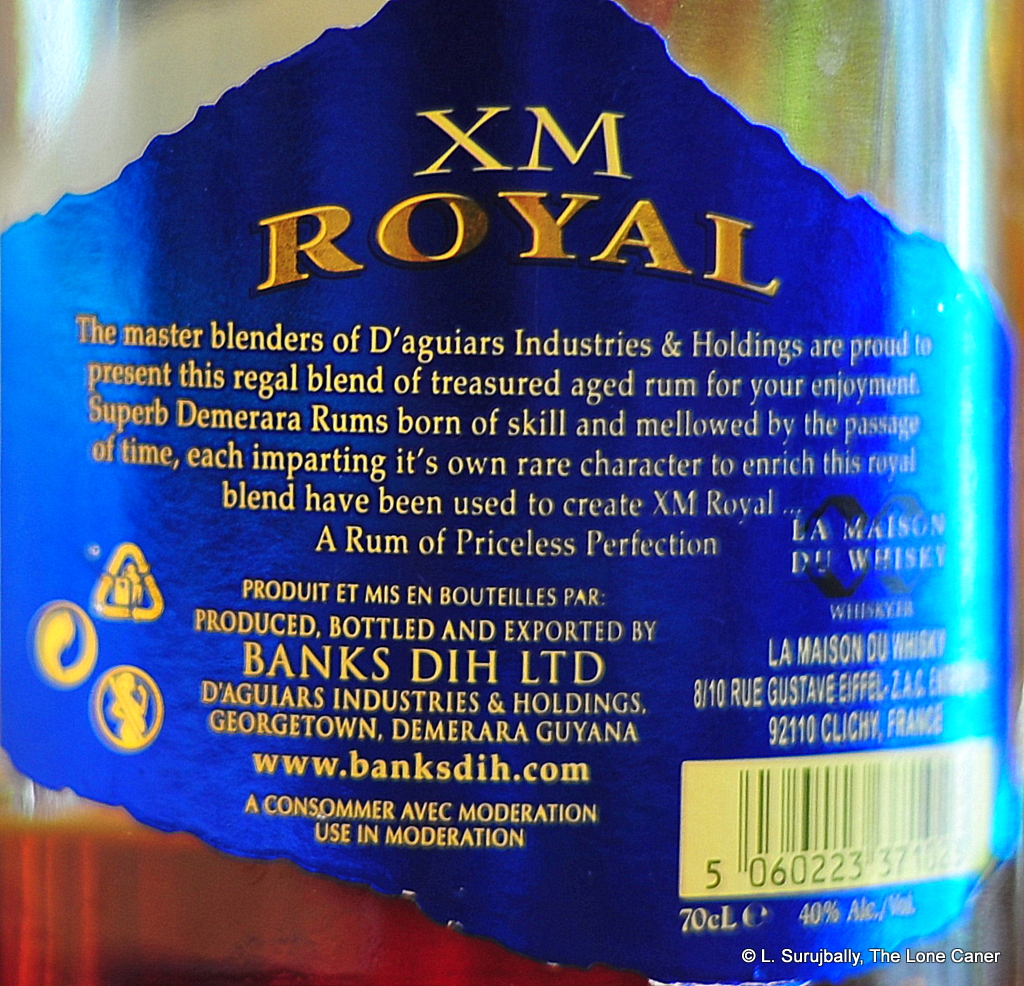 My own opinion was that it lacked body and needed a firmer texture…the XM 10, while not exactly anorexic, gave the impression of having rather more potential than actuality, and the flavours, decent and tasty enough by themselves, suffered somewhat from dumbing things down to standard strength (this may be my personal preferences talking — I’ve gone on record many times in stating that 40% is just not good enough for me anymore — so take that bias into account). On the other hand, maybe it’s like the DDL 12 year old, a bridge to the better rums in the XM universe like the 12 and the 15…and since I obtained those the other day, once I review them I can tell you whether this paucity of character is a characteristic of this rum only, or some sort of preference of the master blender that permeates the line. Honestly, I hope it’s the former.
My own opinion was that it lacked body and needed a firmer texture…the XM 10, while not exactly anorexic, gave the impression of having rather more potential than actuality, and the flavours, decent and tasty enough by themselves, suffered somewhat from dumbing things down to standard strength (this may be my personal preferences talking — I’ve gone on record many times in stating that 40% is just not good enough for me anymore — so take that bias into account). On the other hand, maybe it’s like the DDL 12 year old, a bridge to the better rums in the XM universe like the 12 and the 15…and since I obtained those the other day, once I review them I can tell you whether this paucity of character is a characteristic of this rum only, or some sort of preference of the master blender that permeates the line. Honestly, I hope it’s the former. Rumaniacs Review 018 | 0418
Rumaniacs Review 018 | 0418 Rumaniacs Review 014 | 0414
Rumaniacs Review 014 | 0414